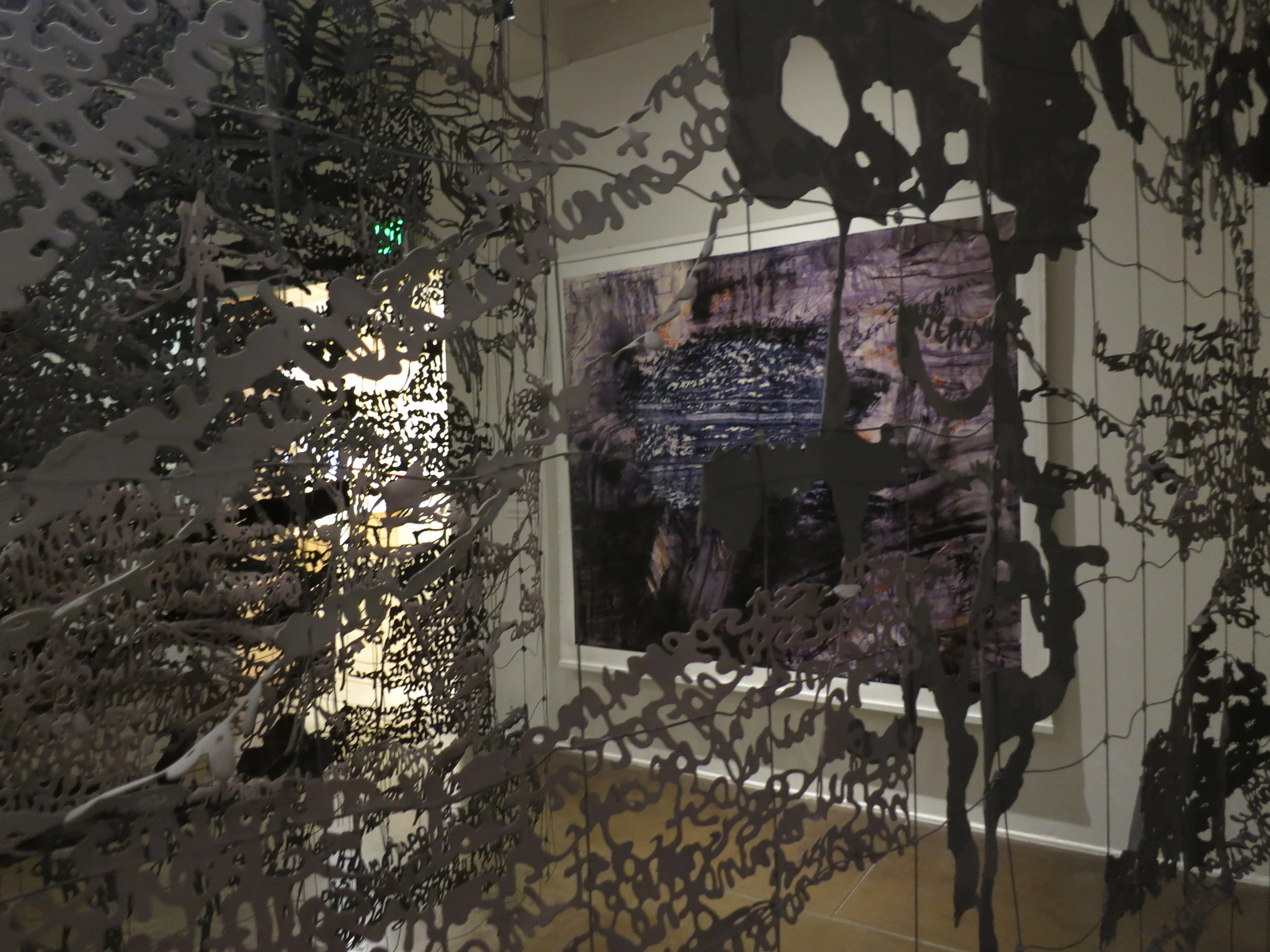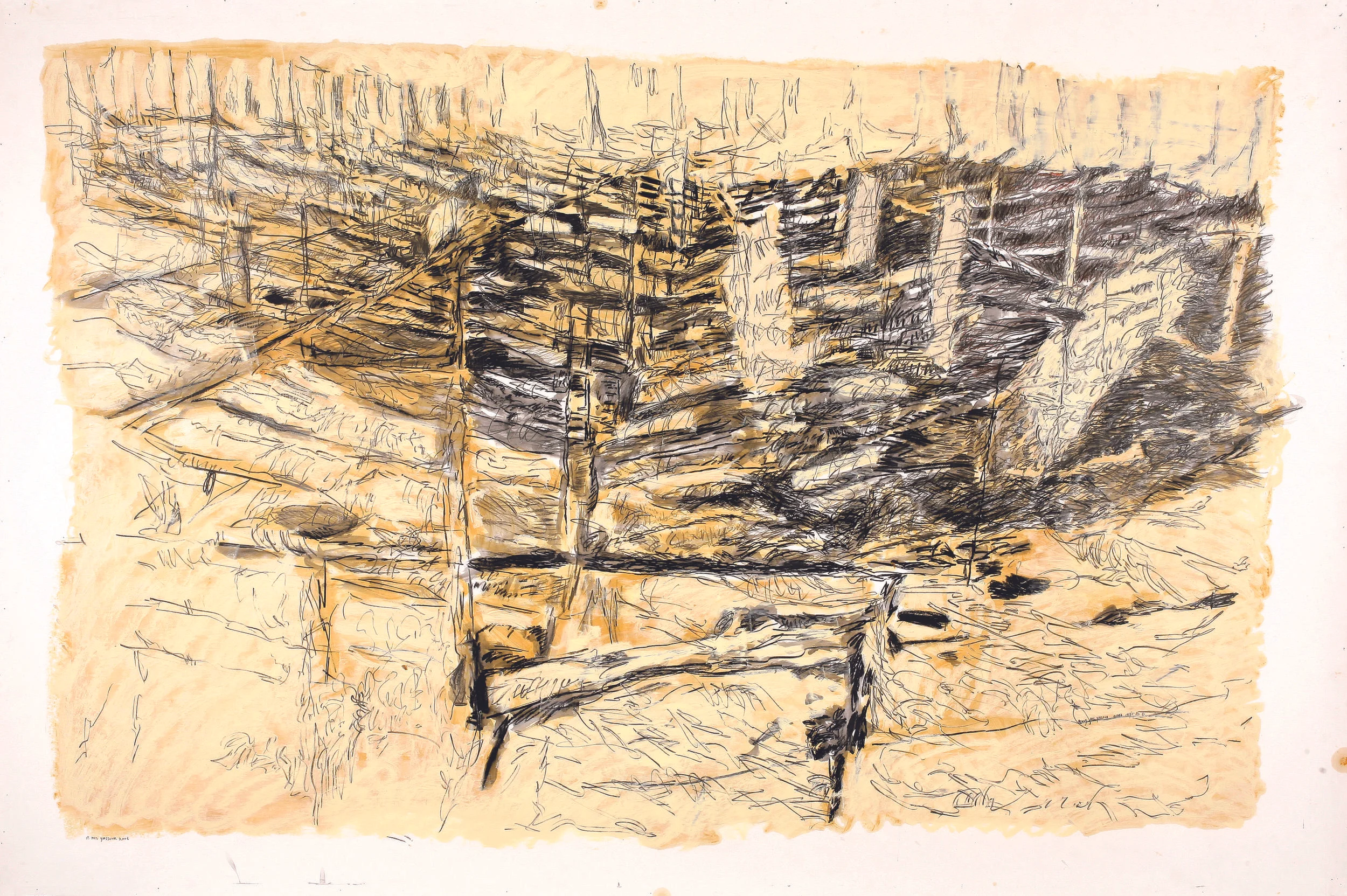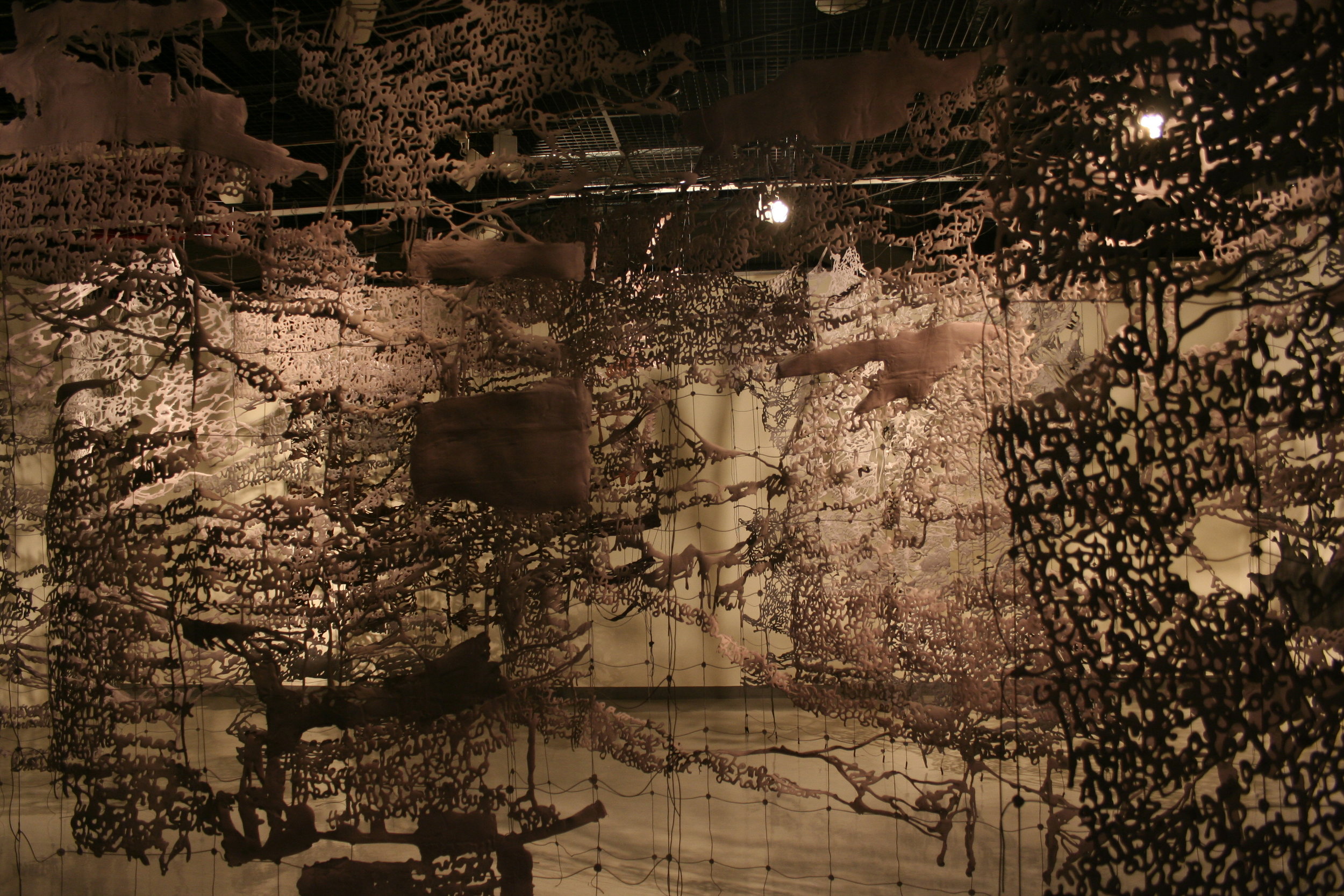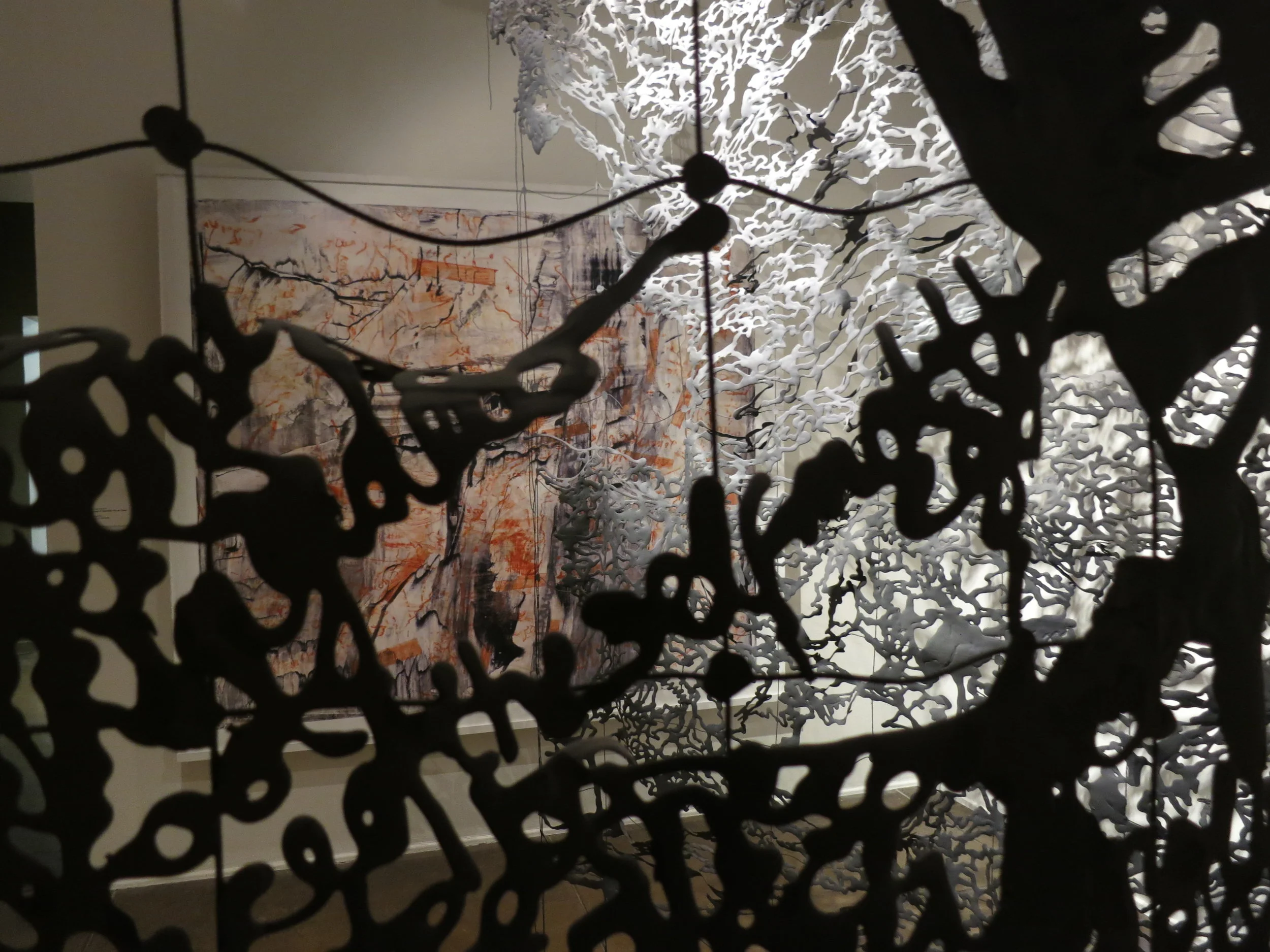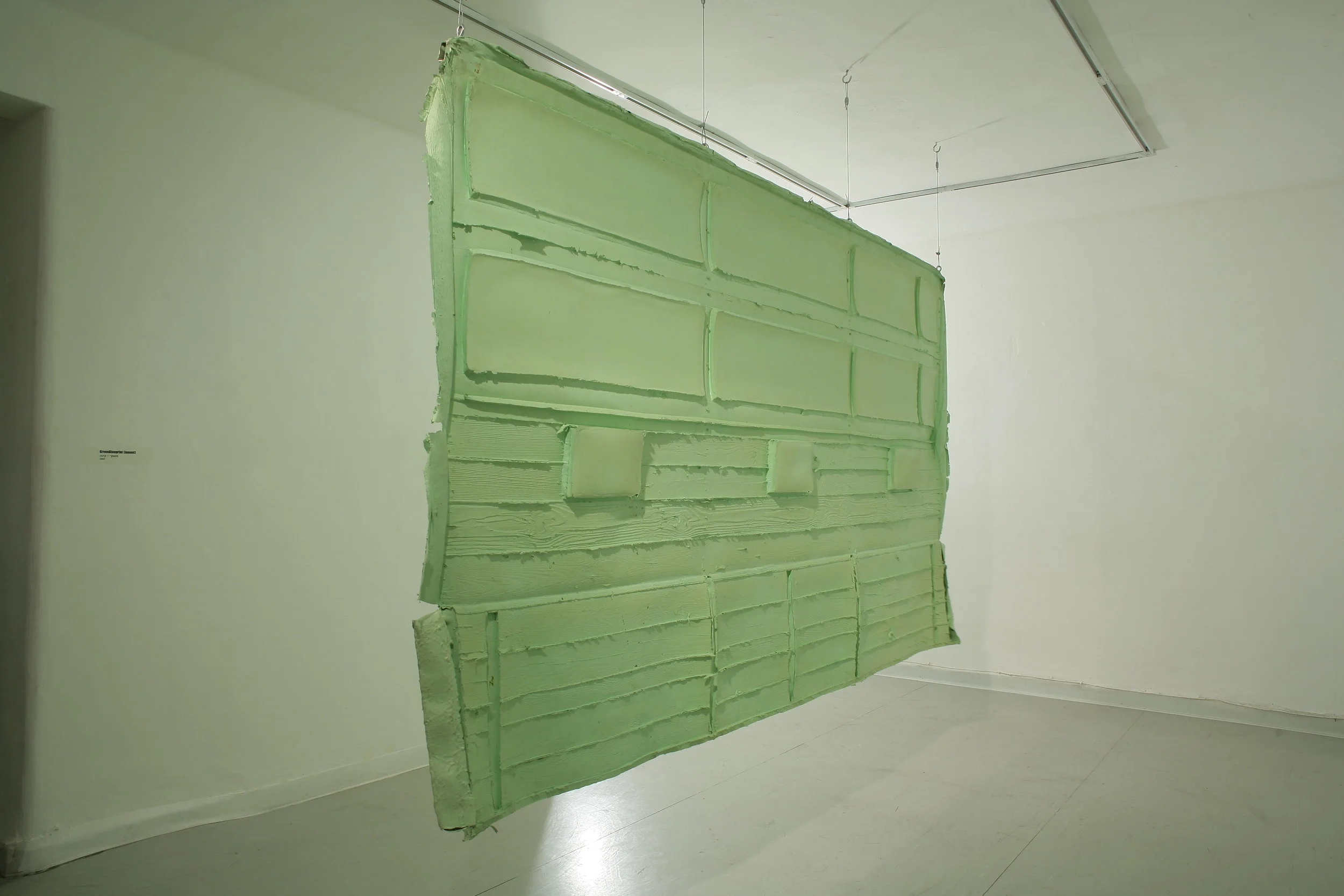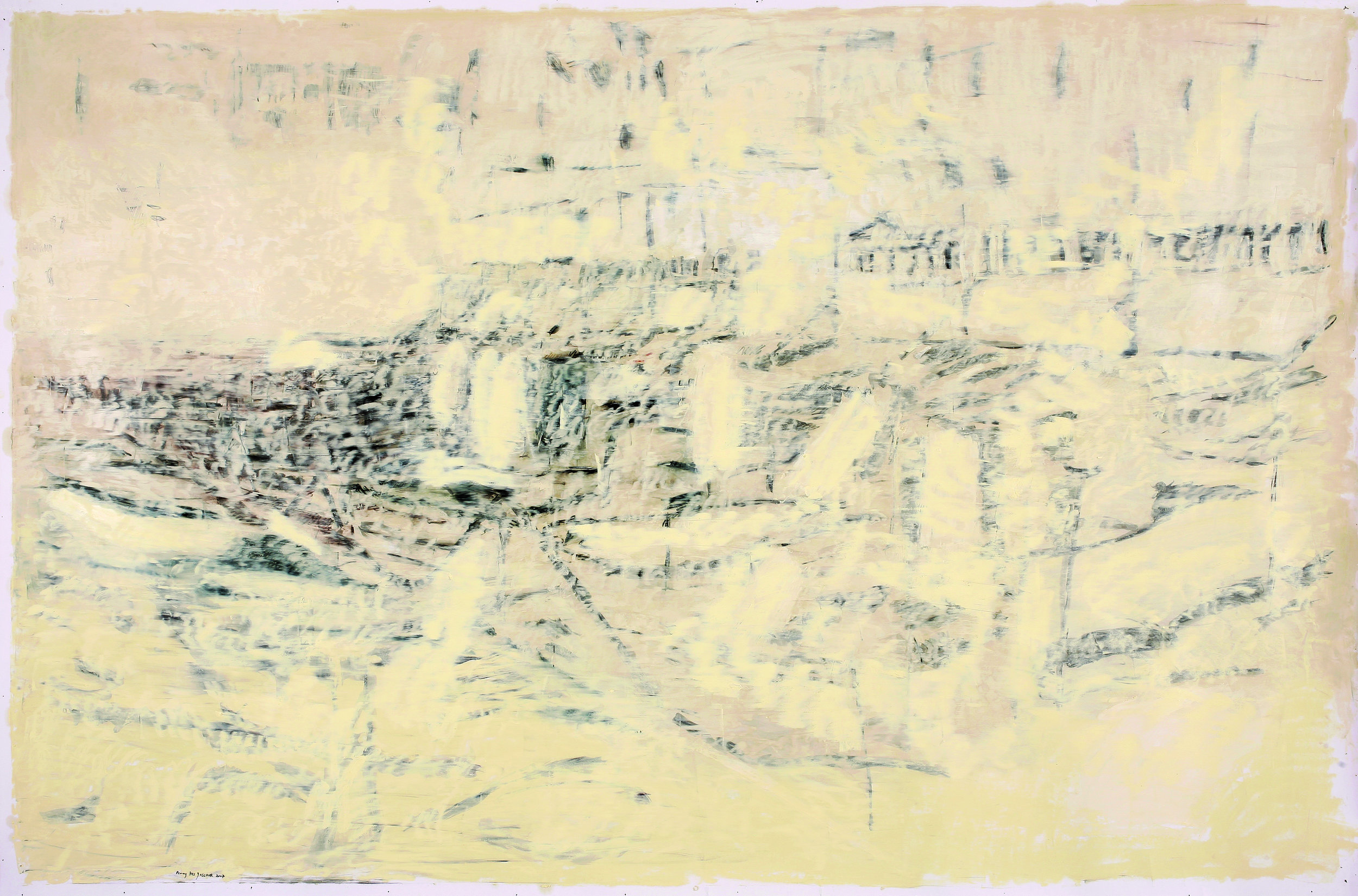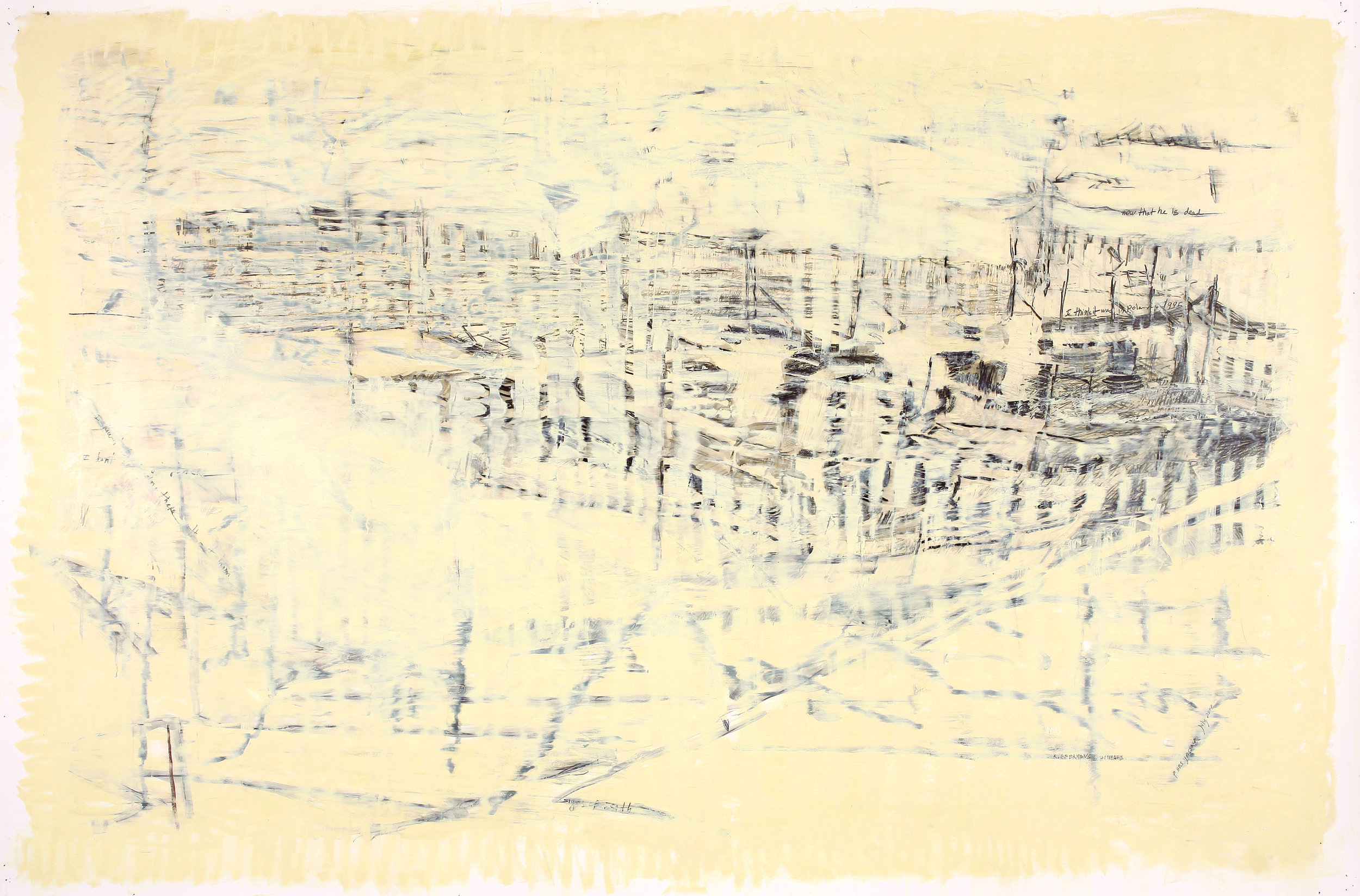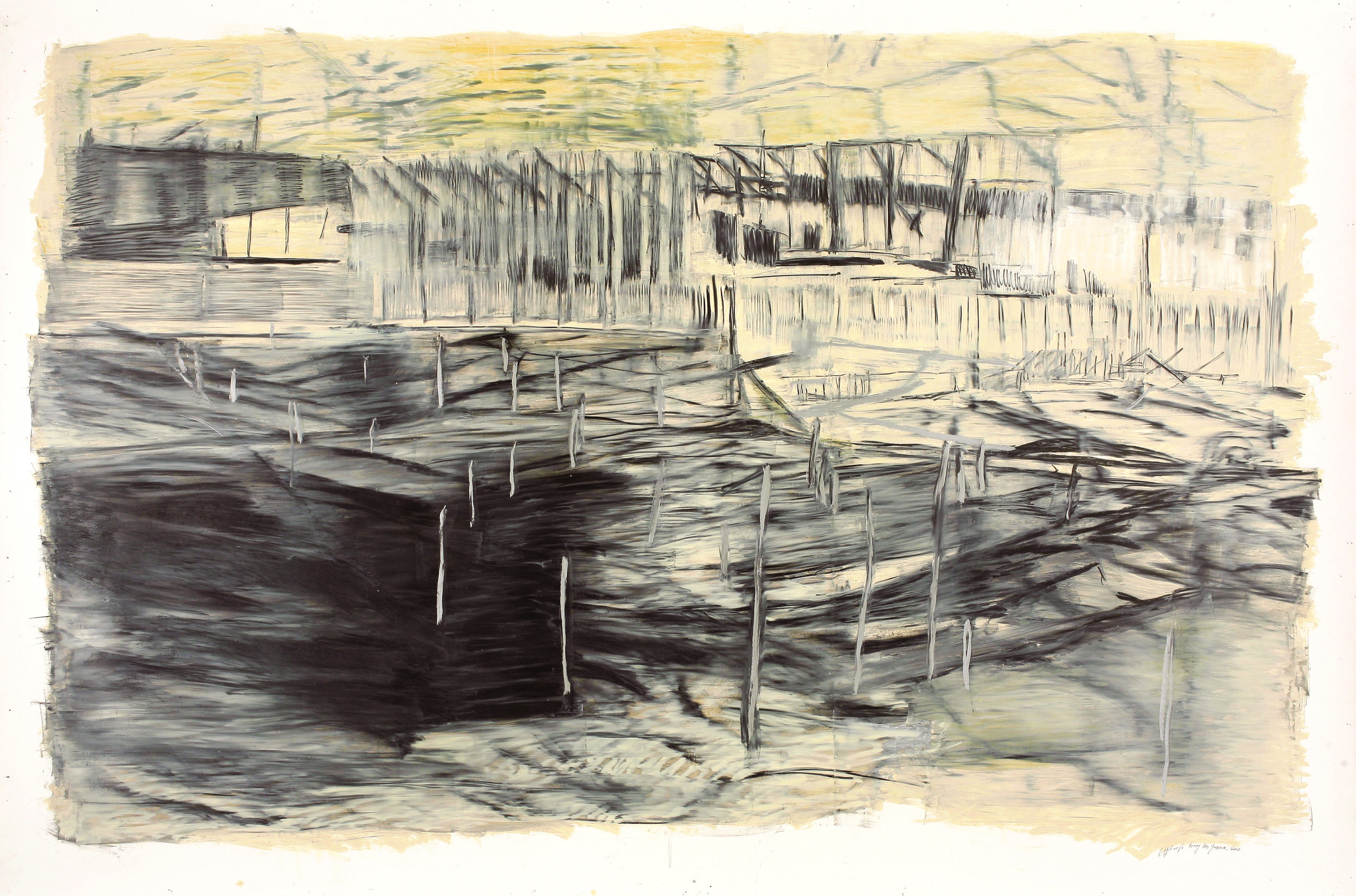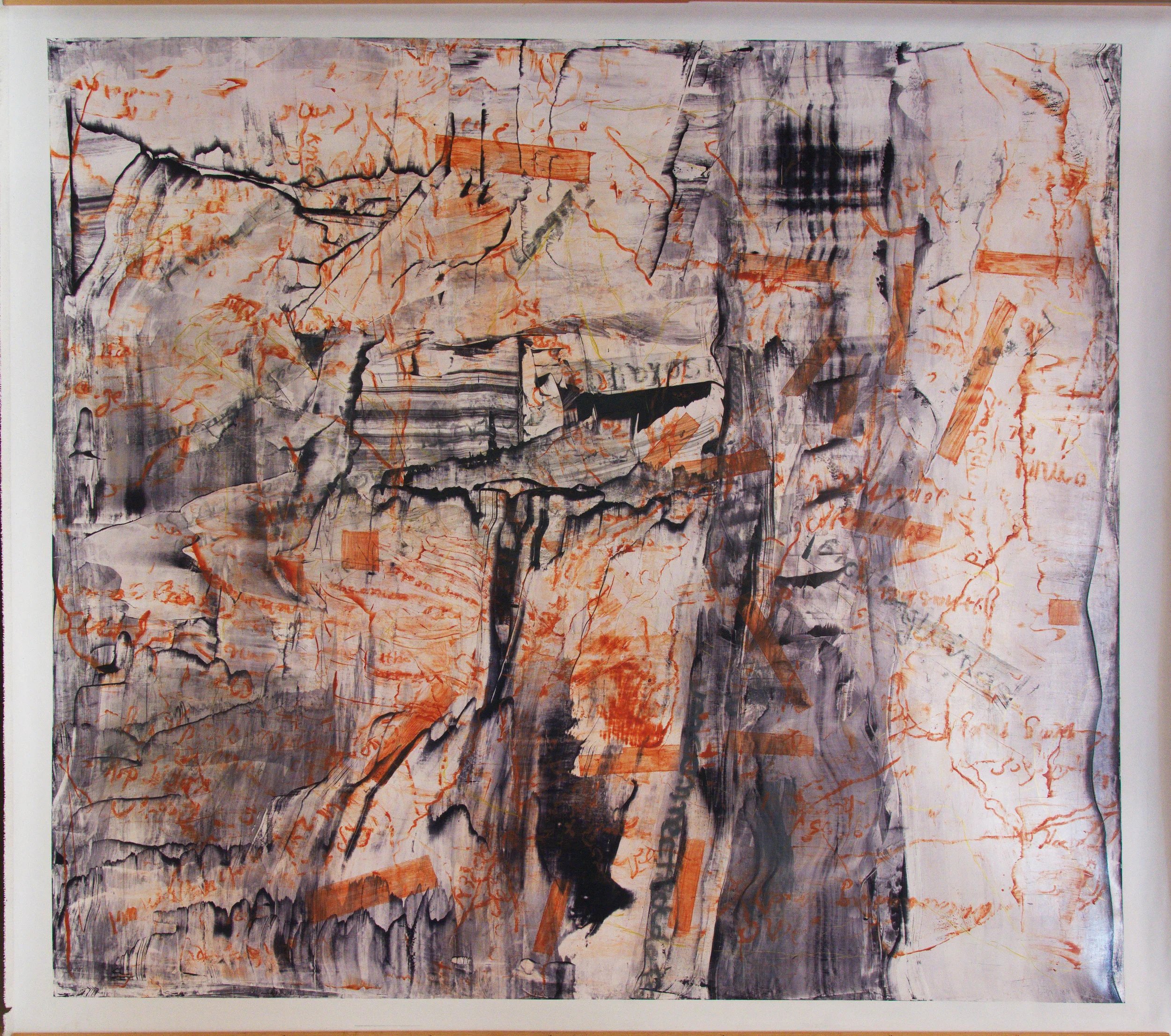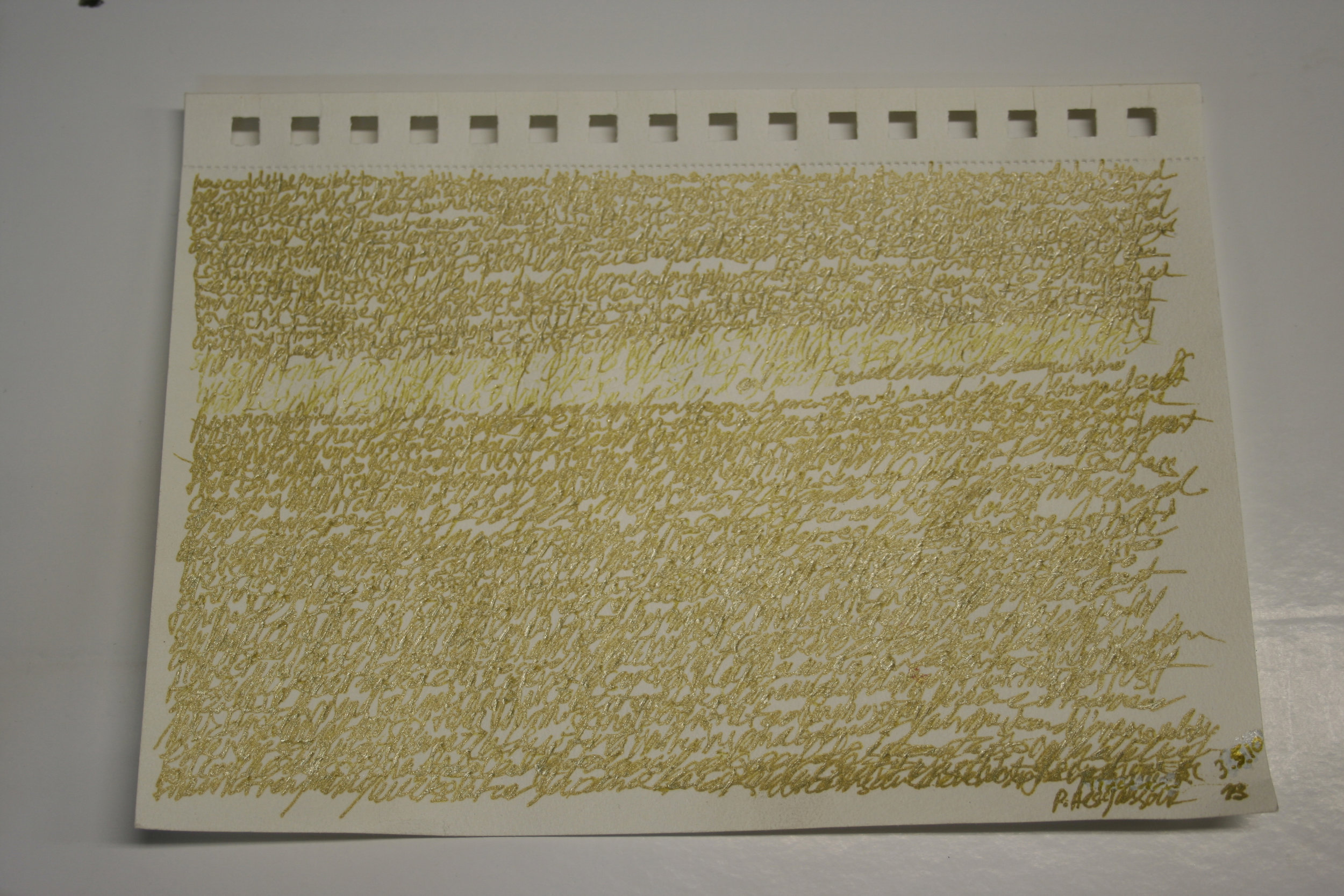Ein-Harod Museum of Art 1993
Thinking about the space as a Mental Map, a 3-dimensional spatiality that breaks sequences and opens gaps subverts under the so-called objective appearance, typical to the cartographical maps, enables me to have flexible ways of operations.
Like the Middle Ages mapping painter, whose prejudices and beliefs, fears and emotions were inseparable parts of his tactile maps. This way I could enlarge the fringe, reduce the importance, cut the continuity, raise the degree of density and present the absent.
Mental maps are individual and idiosyncratic internalized spatial representations and are usually a mixture of both objective knowledge and subjective perception of places and environments. They contain visual and perceptual information regarding locations, impressions of places and personal memories, including emotional, psychological and tactile experiences. (Like fears, prejudices, ideologies, facts and fantasies embody by sounds, smells, textures etc). They also contain black holes of non- knowledge, verbal and non- verbal information.
Mental maps represent ever changing summaries of spatial knowledge. They are self organized system, synergetic, open, complex and ever updating. Such maps are simultaneously e layered with heterogeneous and multiple points of views and scales. Their hierarchy is personal and subjective, not obeying an external priority.
The mental Map documented the subjective character of the mutual relationship between the impression of the environment on the individual’s perception and the projection of his psychological and cultural-political consciousness upon this environment.
The known cartographic maps has no evidences of sensual activities or journeys, they are practices of spatial representations that erased the footsteps of the odyssey and the impressions of the quest. They created ontological separation between nature, culture, society and the every day practices.


